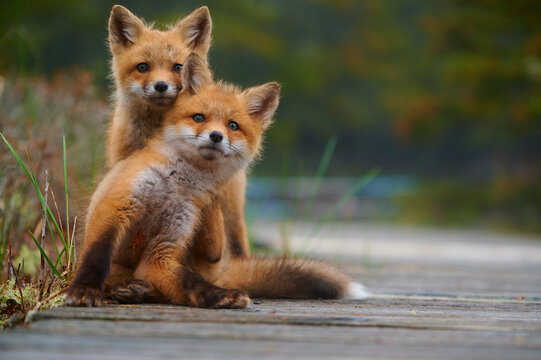
The Enchanting World of Baby Foxes: A Comprehensive Guide
Introduction
Baby foxes, with their adorable features and playful antics, have captivated the hearts of nature enthusiasts worldwide. These tiny creatures, known as kits or cubs, embody the essence of wilderness and evoke a sense of wonder and curiosity. This comprehensive guide delves into the fascinating world of baby foxes, exploring their physical characteristics, behavior, diet, habitat, and conservation status.
Physical Characteristics
Baby foxes are born with a soft, dense fur that ranges in color from reddish-brown to gray or black. Their ears are large and pointed, giving them an endearingly curious appearance. Their eyes are typically blue or gray at birth, gradually changing to a golden or amber hue as they mature.
Kits have a small, compact body with short legs and a bushy tail. Their weight varies depending on the species, but they typically weigh between 100 and 200 grams at birth. As they grow, they gain weight rapidly, reaching their adult size within a few months.
Behavior
Baby foxes are highly social creatures that live in family groups called litters. They are playful and energetic, spending much of their time exploring their surroundings and interacting with their siblings. Kits communicate through a variety of vocalizations, including whines, yelps, and barks.
At a young age, kits are dependent on their mother for food and protection. They nurse frequently and stay close to her side. As they grow older, they become more independent and begin to venture out on their own.
Diet
Baby foxes are primarily carnivorous, feeding on a variety of small animals. Their diet includes rodents, rabbits, birds, insects, and even fruits and berries. Kits are opportunistic feeders and will consume whatever prey they can find.
As they mature, foxes develop a more specialized diet. Some species, such as the red fox, become primarily carnivorous, while others, such as the gray fox, retain a more omnivorous diet.
Habitat
Baby foxes are found in a wide range of habitats, including forests, grasslands, deserts, and urban areas. They prefer areas with dense vegetation that provides cover and protection from predators. Kits typically live in dens, which can be burrows, hollow logs, or abandoned animal burrows.
Conservation Status
The conservation status of baby foxes varies depending on the species and region. Some species, such as the red fox, are widespread and abundant, while others, such as the swift fox, are threatened or endangered.
Habitat loss, hunting, and persecution are the primary threats to baby foxes. Conservation efforts focus on protecting their habitats, reducing human-wildlife conflicts, and raising awareness about their importance in the ecosystem.
Species of Baby Foxes
There are several species of foxes that give birth to baby foxes, including:
- Red Fox (Vulpes vulpes): The most common and widespread species of fox, found in North America, Europe, and Asia.
- Gray Fox (Urocyon cinereoargenteus): A smaller species of fox found in North America.
- Arctic Fox (Vulpes lagopus): A white-furred fox found in the Arctic regions of North America and Eurasia.
- Swift Fox (Vulpes velox): A small, pale-colored fox found in the Great Plains of North America.
- Kit Fox (Vulpes macrotis): A small, desert-dwelling fox found in the southwestern United States and Mexico.
Conclusion
Baby foxes are captivating creatures that play an important role in the ecosystem. Their playful antics and adorable features have endeared them to people worldwide. By understanding their physical characteristics, behavior, diet, habitat, and conservation status, we can appreciate the beauty and fragility of these remarkable animals.
Protecting baby foxes and their habitats is essential for ensuring the survival of these fascinating creatures. Through conservation efforts and responsible wildlife management, we can help ensure that future generations can continue to marvel at the enchanting world of baby foxes.
